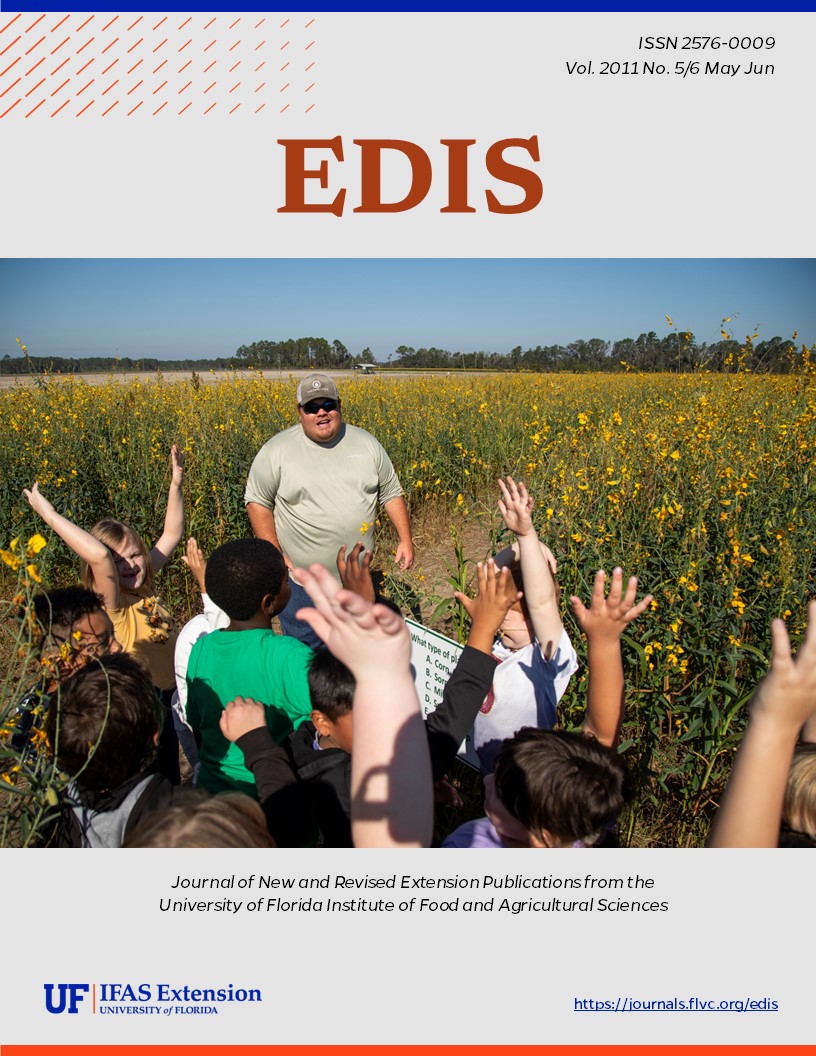Resumen
This document is about symptoms of potassium (K) deficiency among palm species. This disease appears first on the oldest leaves. Older leaflets of some palms such as Dictyosperma album (hurricane palm) are mottled with yellowish spots that are translucent when viewed from below. In other palms such as Dypsis cabadae (cabada palm), Howea spp. (kentia palms) and Roystonea spp. (royal palms), symptoms appear on older leaves as marginal or tip necrosis with little or no yellowish spotting present (Figures 2 and 3). The leaflets in Roystonea, Dypsis, and other pinnate-leaved species showing marginal or tip necrosis often appear withered and frizzled.
Citas
Broschat, T.K. 1984. Nutrient deficiency symptoms in five species of palms grown as foliage plants. Principes 28:6-14.
Broschat, T.K. 1990. Potassium deficiency of palms in south Florida. Principes 34:151-155.
Broschat, T.K. 1994. Removing potassium deficient leaves accelerates rate of decline in pygmy date palms. HortScience 29:823.
Bull, R.A. 1961. Studies on the deficiency diseases of the oil palm. 2. Macronutrient deficiency symptoms in oil palm seedlings grown in sand
culture. J. West African Inst. Oil Palm Res. 3:254-264

Esta obra está bajo una licencia internacional Creative Commons Atribución-NoComercial-SinDerivadas 4.0.
Derechos de autor 2011 UF/IFAS

